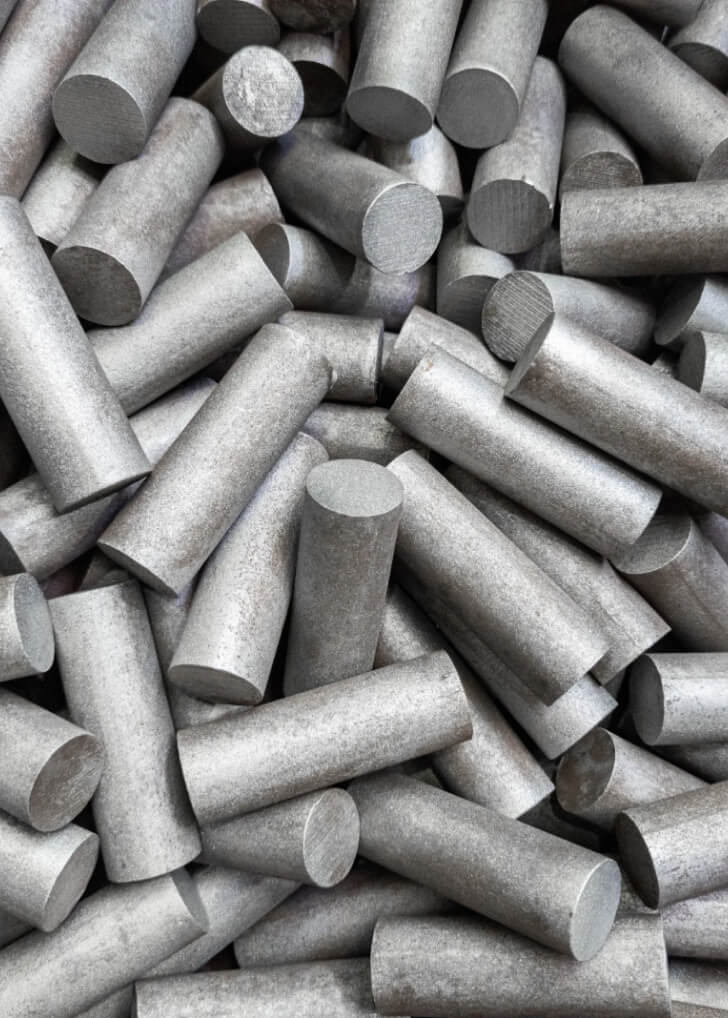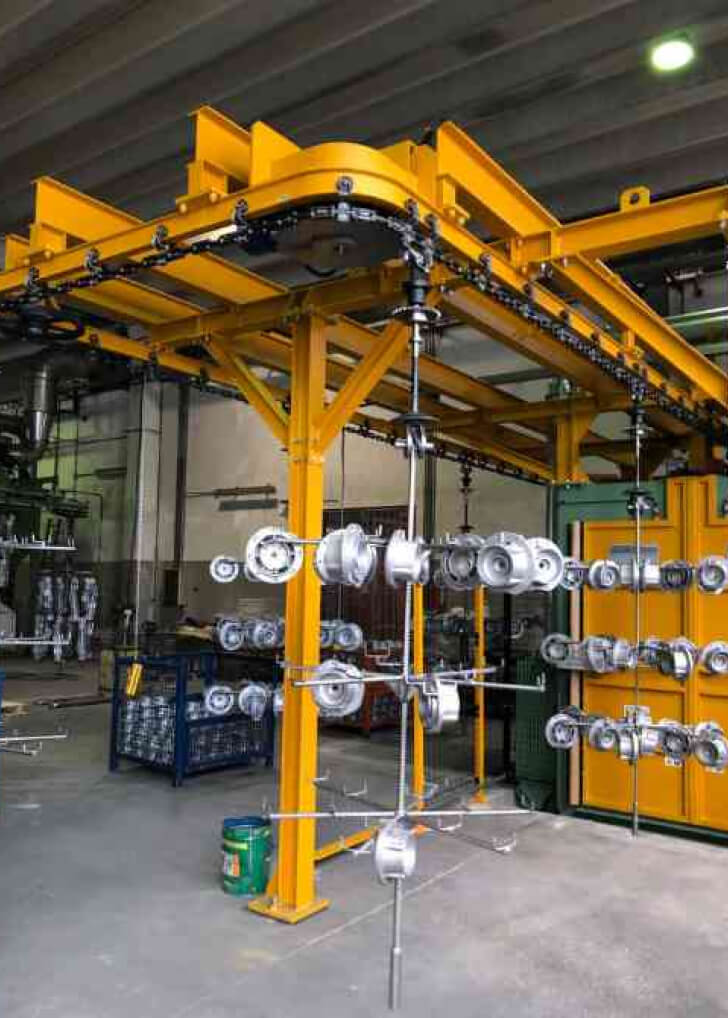What is shot blasting and where is it applied?
Shot blasting is a mechanical surface treatment carried out by projecting metallic abrasives. This shot blasting process involves the use of metallic abrasives to clean and even out the treated surface, altering the pre-existing surface layer through impact and friction abrasion.
Originally developed for the removal of molding sand and cores from castings in foundries, shot blasting has found application in various sectors.
It is used to prepare surfaces for protective coatings such as powder or spray painting, metallization, and Teflon coating, as well as to remove oxides, scale, rust, and welding residues. Other uses include paint stripping, deburring, post-molding cleaning and heat treatment, and surface roughening
Difference between shot blasting and sandblasting
One of the main differences between shot blasting and sandblasting lies in the type of abrasive used and the energy employed in the process. While shot blasting uses metallic abrasives thrown at high speeds, allowing for deep cleaning and accurate preparation of metal surfaces, sandblasting employs sand or other inert abrasive materials. Sandblasting can also be carried out outdoors without abrasive recovery and is used to clean surfaces that are not extremely contaminated. Shot blasting uses greater kinetic energy generated by turbines, allowing metallic abrasives to remove harder and more resistant surface layers such as scale, rust, and welding residues. Sandblasting, although effective for many applications, has a less intense impact on the treated surface, making it more suitable for light surface cleaning and preparation.


Advantages of the shot blasting process
Shot blasting offers numerous advantages, including compliance with standards for controlling polluting effluents. It is a dry mechanical process that does not involve the use of chemicals. The only pollutant it produces is the dust generated by the shot blasting chamber, which is filtered through suitable machinery connected to the plant. Additionally, shot blasting meets the increasing demand for aesthetically better and more functional products.
- Contact us
Learn more about our shot blasting solutions
For more information on shot blasting and the shot blasting plants we can offer, feel free to contact us. Our team of experts is available for personalized consultations and technical details.
Types of shot blasting plants and abrasives used
There are two types of shot blasting plants and various types of abrasives used in the process.
In compressed air shot blasting plants, the abrasive is precisely projected by compressed air directly onto the surface of the piece to be treated, thanks to specific nozzles. These nozzles can be manually or automatically controlled, ensuring precise and uniform application of the treatment.
In turbine shot blasting plants, on the other hand, the kinetic energy required for the process is generated by turbines driven by electric motors. These plants are distinguished by their ability to treat large surfaces, thanks to the power of the turbines that allow large quantities of abrasive to be projected at high speeds.
They are ideal solutions for jobs to be carried out on large or complex pieces.
Speaking of abrasives used, metallic ones are among the most common. Steel shot, for example, is widely used in industrial contexts for its hardness and resistance, perfect for removing surface layers like scale. For more delicate treatments or surfaces that require a lighter finish, metallic abrasives of smaller dimensions such as stainless steel, ceramic, and aluminum are preferred, using accessories such as speed controllers (inverters).